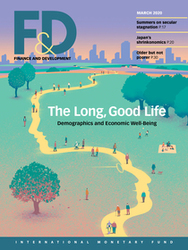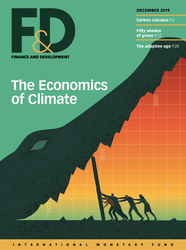
Finance & Development, March 2020
This issue of Finance & Development discusses link between demographics and economic well-being. In the coming decades, demographics is expected to be more favorable to economic well-being in the less developed regions than in the more developed regions. The age structure of a population reflects mainly its fertility and mortality history. In high-mortality populations, improved survival tends to occur disproportionately among children. The “demographic dividend” refers to the process through which a changing age structure can spur economic growth. It depends, of course, on several complex factors, including the nature and pace of demographic change, the operation of labor and capital markets, macroeconomic management and trade policies, governance, and human capital accumulation. Population aging is the dominant demographic trend of the twenty-first century—a reflection of increasing longevity, declining fertility, and the progression of large cohorts to older ages. Barring a change in current trends, the industrial world’s working-age population will decline over the next generation, and China’s working-age population will decline as well. At the same time, trends toward increased labor force participation of women have played out with, for example, more women than men now working in the United States.
Publication date: February 2020
ISBN: 9781513528830
$0.00
Add to Cart by clicking price of the language and format you'd like to purchase
Available Languages and Formats
| Arabic | |||
| Chinese | |||
| English | |||
| French | |||
| Russian | |||
| Spanish |
Topics covered in this book
This title contains information about the following subjects.
Click on a subject if you would like to see other titles with the same subjects.
FD , F&D , country , shrinking population , tried-and-tested policy solution , interest rate , policy choices matter
Summary
Copyright © 2010 - 2025
Powered by:
AIDC



